Everything you need to know about diamonds

The most coveted, beautiful and majestic "dream stone". In Arab countries it was called "almas", which means "the hardest", in Greece - "adamas" or "indestructible". This stone was adored by the great Empress Catherine II, and to this day millions of people on the planet are interested in it. What a diamond consists of, what properties it has, where it is used, who is suitable for - you will learn all this and much more about this beautiful stone from the article.

What it is?
The word “diamond” appeared in the Russian language in the 15th century thanks to the traveler Afanasy Nikitin, who mentioned this word in his book entitled “Walking the Three Seas”. So what is it - a diamond?
Diamond is the hardest natural mineral, an allotropic modification of carbon that is resistant to high pressure... It looks like an untreated, that is, without faceting, a mineral like an unattractive piece of an irregular crystal. Due to the wide range of light refraction, it differs from an ordinary piece of glass only in its bright glow.
This description does not in any way correlate with the modern, real understanding of the word "diamond".
At the moment, a diamond is a precious, purest and most expensive gem in the whole world, a symbol of wealth and luxury.


In ancient times (almost 3000 years BC) in India, people believed that 5 natural principles were concentrated in this stone, namely air, water, earth, sky and energy. For its brightest brilliance, people endowed it with certain magical properties and did not consider it precious.
Much later, in the 15th century, the stone was brought from India to Europe, the development of technology allowed people to process and cut this mineral. Then the stone acquired value and began to be actively used in the jewelry industry. In Russia, the precious stone took a leading position only at the beginning of the 17th century, before that rubies and opals were considered the most popular.
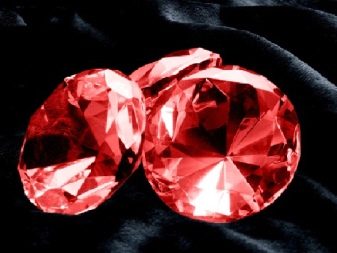

There are several famous diamonds in world history, each of which has its own unique destiny. Each of them also has its own name.
A diamond named "Koh-i-noor" (translated as "Mountain of Light") is so named because it weighs almost 800 carats. It was found in 56 BC on the territory of the future India and Pakistan among the wealth of the Mughal Empire. During its long "life" the stone was in the possession of the Persian Shah, the Indian king, as well as in Afghanistan, after which it ended up in the hands of the British. On the territory of Foggy Albion, it was re-cut and acquired a modern look.
Today it adorns the small Royal Crown of Great Britain.

There is one more, no less legendary stone called "Derianur", or "Sea of Light". It was found in India in the 16th century and was the first to be cut in the shape of a rose. Its weight was about 182 carats. He visited the Iranian shahs, decorated the throne of Shah-Jakan. It is currently held at the Central Bank of Iran in Tehran.

Place of Birth
Diamonds are, in essence, minerals that are rare and at the same time widespread, since they are found in absolutely all continents. Until recently, it was believed that there were no diamonds in Antarctica, but not so long ago, fragments of an iron meteorite with diamonds were discovered there.
In nature, the deposits of these gems are divided into two categories:
- primary (primary), where diamonds are formed in igneous rocks, in the very depths of the earth;
- secondary (alluvial), where diamonds arise from the destruction of primary deposits.
Primary deposits include kimberlites, and as a result of their erosion, placer deposits are formed. Kimberlites are volcanic and subvolcanic ultrabasic rocks with an alkaline slope. Mostly they can be found on ancient shields and platforms.
Most often they exist in tubular form and form kimberlite pipes. Diamonds in them are always unevenly concentrated.

Precious minerals were found mainly in placers, and almost always this happened completely by accident - no one was looking for diamonds on purpose. But after finding the first species in the rivers of South Africa, researchers stumbled upon deposits next to the river. So the second primary diamond deposit was found and later named Jagersfontein. The first was a deposit in India, but by the end of the 19th century they were already depleted.

Today, the world's largest diamond deposits are:
- Yubileiny deposit (Russia);
- deposit "Udachny" (Russia);
- the Mir deposit (Russia);
- Argyle deposits (Australia);
- the Catoca deposit (Angola);
- field "Venice" (South Africa);
- deposit them. V.P. Griba (Russia);
- the Jwaneng field (Botswana);
- Orapa deposit (Botswana);
- deposit "Botoubinskaya" (Russia).




Earth's diamond deposits are not, in fact, the only ones. There are stones created when a cosmic body collides with the earth's surface, that is, when a meteorite falls. At the moment of impact, the temperature reaches 3000 degrees, and the pressure is 100 GPa. In such conditions, an impact breed is formed. Such stones were found in the USA, Yakutia, and also in Antarctica.
The extraction of such stones is unprofitable, since the stones in the "unearthly" deposits are small.

What is a diamond made of?
Have you ever wondered that diamond and graphite are one and the same substance. It would seem that they cannot have anything in common.But in fact, in both cases it is carbon, just in different modifications.
By structure, a diamond is a carbon atom equidistant from each other by 0.154 nanometers. They form a crystal lattice with four more atoms inside it, which are linked to each other by fairly strong covalent bonds, which makes diamond the most durable mineral. As an element in the periodic table, it is designated C (carbon) and is one of the simplest gemstones in terms of its chemical composition, because it consists only of carbon.

Properties
Diamond is characterized by a number of important properties.
Chemical
In addition to carbon, a diamond can contain various impurities. The main one is nitrogen, which forms centers responsible for the color of the stone.
Uncut crystals are opaque and belong to type I, that is, nitrogen is contained in them in an amount of 0.25%. All the rest are of type II, that is, the inclusion of this substance in them does not exceed 0.001%.

Physical
Diamonds are not only colorless, but also with one shade or another. Among them there are lilac, yellow, brown, blue, pink, green, milky, gray - up to black... Today it is known that when irradiated with charged particles, the stone turns blue or green. How to convert it from color to blue is still unknown.
Gems have a strong luster, which is due to a high degree of light refraction (n = 2, 417), and a pronounced dispersion, and this gives a play of light of different colors.






Diamond crystals can luminesce (glow) when X-rays strike them. And later phosphorescence can be observed, in other words, afterglow.
The most famous physical property that is inherent in a diamond is, of course, hardness.... On the 10-point Mohs scale, it is the standard, that is, it has the highest value - 10. It is the hardest gem, but at the same time it is very fragile. The density (or, as it is also called, the specific gravity) of transparent crystals is 3515 kg / m3, and opaque and translucent - 3500 kg / m3.
Diamond is dielectric and does not conduct electricity... Resistant to all acids even at high temperatures. It has good thermal conductivity. It can transform into graphite at 1880 degrees and atmospheric pressure. And at a temperature of 850 degrees, a diamond can burn, but what is important - this can only happen in air.
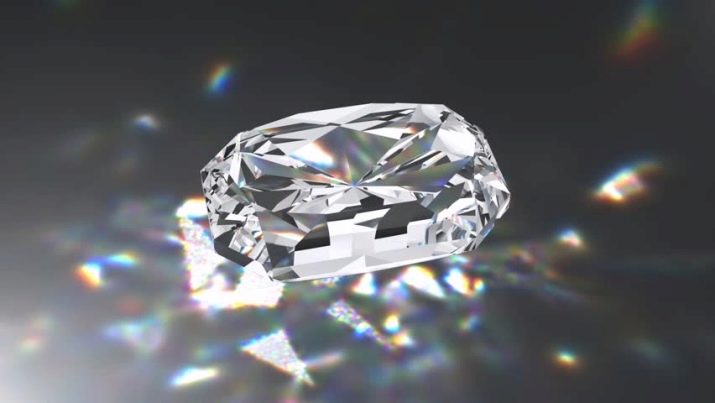
Magical
Many people believe that a diamond, like any other stone, also has a magical side. It is believed that this mineral is a symbol of courage and perfection, which strengthens the strength of the spirit of its owner, emphasizes his masculinity and strength, and also makes him happy, successful and protects him from an unkind look and damage.
If a person gives such a stone to another, then it is believed that they bind themselves with the strongest union. A diamond gift is considered a symbol of love and fidelity.
Stolen diamonds bring misfortune and death. Defective diamonds can also cause problems.

Therapeutic
Equally interesting is the fact that diamonds also have medicinal properties: they strengthen the immune system, relieve fatigue, treat insomnia and help the body fight infections.

Views
Currently, there are many types of diamonds that are known to man. The views are characterized depending on the selected parameter.
So, by weight, diamonds are divided into the following varieties:
- small, the weight of which does not exceed 0.29 carats;
- medium-sized, which weigh in the range of 0.3-0.99 carats;
- large, weighing more than 1 carat.
Please note that one SI carat is 0.0002 kg.
Size, in turn, means the diameter of a round-cut diamond.

Some gems are distinguished by the type of crystal lattice.
- Board - a crystal with a fine-grained structure, which contains inclusions of graphite, cracks and other defects. From the point of view of the jewelry industry, such a stone is "inferior".
- Carbonado - dark green or grayish-black minerals, consisting of amorphous carbon and graphite. They have high resistance and are highly regarded in the industry.
- Ballas - stones are rounded, translucent, less often opaque or completely transparent. Mostly black, gray, greenish in color.



Distinguish diamonds by color.
- Transparent ("cape").
- Painted in various shades (fancy). Such stones are pink, yellow, green, red, blue. The stones that are most vibrantly colored are considered to be as valuable as those that are completely transparent.
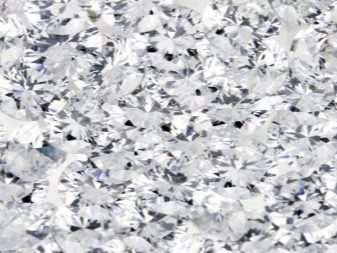
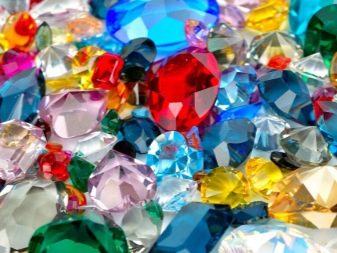
Also, diamonds should be distinguished by their cut shape.
Round (57 sides). Such a stone is able to reflect almost all the light that falls on it.
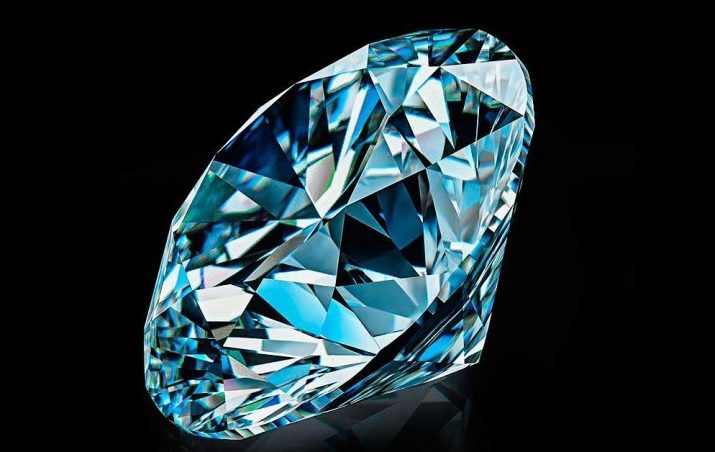
Fantasy:
- "Marquis" has a shuttle shape;

- "Princess" has a square or rectangular shape with sharp corners;
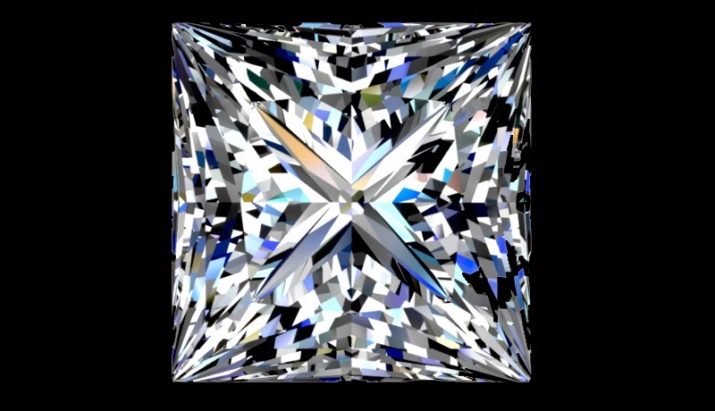
- "oval";

- "pear" is a combination of a round shape and a "marquise" shape;

- "Emerald" has a square or rectangular shape with truncated corners;

- "heart";

- "triangle".

Where is it applied?
Most of us know that diamonds are most widely used in jewelry making. But few people know that a significant part of the stones mined are not suitable for making jewelry out of them. More than 40% of all mined stones are suitable only as composite materials for industrial use, 45% of mined diamonds are considered conditionally suitable for the production of jewelry and only 15% are minerals suitable for cutting, from which diamonds can be made.
Cutting is the process of grinding a stone by which planes are applied to a diamond to give it a specific shape. Note that planes are called facets or faces. Grinding allows you to either show the best properties of a diamond (color, shine), or hide its imperfections (various defects: surface and internal).

Until the 20th century, the most common form of cutting was the "rose", today it is the "diamond" cut. It can be round, classic or "fantasy", which is also divided into types by shape ("marquis", "pear", "heart", "oval", "princess", etc.).
Distinguish between rough diamonds depending on the technology used for its processing:
- "Souls" - these are stones that have the correct shape, which it seems possible to divide into two large parts and use them as raw materials in order to produce two diamonds;
- "Makbels" - these are nuggets of irregular round shape, which are processed as a whole, without dividing;
- "Cleavage" - these are diamonds that contain cracks (in order to start processing, such crystals are split).
The largest world-renowned diamond cutting enterprises are located in India, Israel, China, Russia and the United States.
It is also important that diamonds are also used in industry. Knives, drills, cutters are made of them. In order to produce cutting and grinding wheels, diamonds are used as an abrasive material.
Diamonds also play an important role in watchmaking, computer technology and even in the nuclear industry, where they act as detectors.
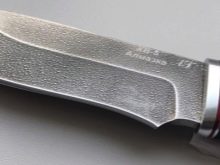


How to distinguish a real stone from a fake?
First, you need to figure out what kind of fakes are, what unscrupulous sellers are doing.
Firstly, zircon, colorless sapphire or crystal are often sold under the guise of diamonds. In this case, in order to determine whether it is a real diamond or not, it is necessary to look through it at the sun. Through a cut diamond it is possible to see only a bright-bright point, and a fake will transmit light.
Many sellers use the popular belief that if a diamond is placed in water, it will disappear and will not be visible. However, it is not. Since the refractive index of light in water is less than the refractive index of light in a diamond, it will shine even when submerged in water.

Secondly, the development of industry has stepped forward a long time ago, and people have learned to make real diamonds in laboratory conditions (the so-called synthetic stones). It is not possible for an ordinary person to distinguish such a "synthetic" product from a natural one, since their composition is absolutely the same (a synthetic stone also consists of pure carbon). Then you need to remember that a real, natural diamond cannot be cheap. Therefore, the obviously underestimated (tenfold) price should alert the buyer.
Do not forget also that there are certificates of conformity for a diamond, which are issued by an independent laboratory only for stones that do not have a setting. Such a diamond must be packed in a blister with the number of the certificate of conformity.
An expert opinion is the surest and most accurate way to determine the authenticity of a diamond.
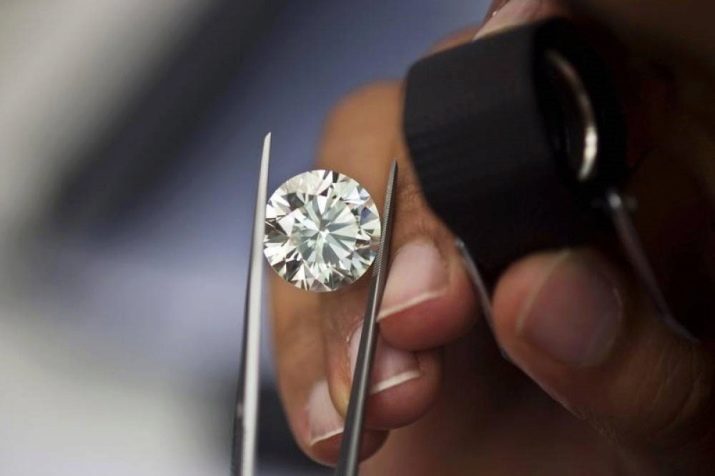
Who is it suitable for?
Stones as a magical element have been considered since ancient times, and to this day people believe in their magical power.
Energy diamond is a very strong stone. Since ancient times it was believed that he is male. His unprecedented firmness characterizes the invincible strength of the spirit of a man. They give him courage and courage.
Women should only wear diamond jewelry after age 30, as the diamond is considered a mature stone. Maturity, as a rule, is not inherent in young, young girls. And after a while, the power of the stone will benefit them.


Since ancient times, people have used stones as amulets. The people believed that a person who is worthy of his amulet should have a balanced character. And only then will a person protect himself with his stone from any negative emotions, evil eye and damage. And for people who are impulsive and cannot cope with their emotions, wearing a diamond is not recommended, as it will only aggravate these qualities.
For centuries, the science of "astromineralogy" has developed, which describes the connections between stones, the signs of the Zodiac and the patron planets of these signs. The diamond in the traditional distribution of stones by signs is considered the first stone.
The most suitable sign for a diamond is Aries. But Libra, Aquarius and Gemini are not recommended to use a diamond as a talisman.

Care rules
In order for jewelry with the stone in question to remain new for a long time, and the diamonds still sparkled brightly in the sun, it is necessary to observe a number of certain rules and recommendations of specialists.
- If possible, remove home decorations so that the stone comes into contact with aggressive household chemicals as little as possible.
- It is advisable to store jewelry not just on an open shelf, but in a special container or bag. This way, less dust will settle on jewelry.
- It is also better for each piece of jewelry to have its own box or pouch. So you will prevent friction of one product against another, as a result of which microcracks and chips may form.
- It is necessary to clean it in an ultrasonic bath every six months (this can be done by a jeweler). At home, it will be enough to regularly wash and clean the jewelry with soap and water.
- Avoid subjecting diamond jewelry to mechanical stress or shock. Diamond, although the hardest of the minerals, is also very fragile.

Interesting Facts
- It is necessary to process at least 250 tons of diamond ore to obtain one carat of diamonds.
- There are no two identical diamonds - each of them has a unique structure and characteristics.
- It is a myth that diamonds do not break.Once upon a time, the mercenaries of King Louis XI seized the jewels of Duke Charles the Bold. Knowing that diamonds are the hardest minerals, they decided to check their authenticity. They began to hit the stones with hammers, and they all crashed. In this way, a myriad of genuine minerals were destroyed.
- Once the Austrian duke, who doubted that his beloved would give a positive answer, was advised to give her a jewel with a diamond, thereby making it clear that the intentions are more than serious. This is how the custom of making a marriage proposal with a diamond ring was born and became the most popular way.
- Approximately 26 tons of diamonds are mined around the world annually.
- Diamonds often became the heroes of works of art ("The Three Musketeers", "Twelve Chairs", "Titanic").
- The Heart of the Ocean diamond has a real copy - a blue heart-shaped diamond. It weighs about 14 carats and was auctioned for $ 7,791,000.
- In the East, it is customary to give and inherit diamonds. It is customary to start wearing stones that are bought only after 7 years have passed after the purchase.
- During the cutting process, a stone can lose about half of its weight.
- Diamonds that were found on the territory where hostilities previously took place are called conflict, bloody.
You will learn interesting facts about diamonds in the following video.








